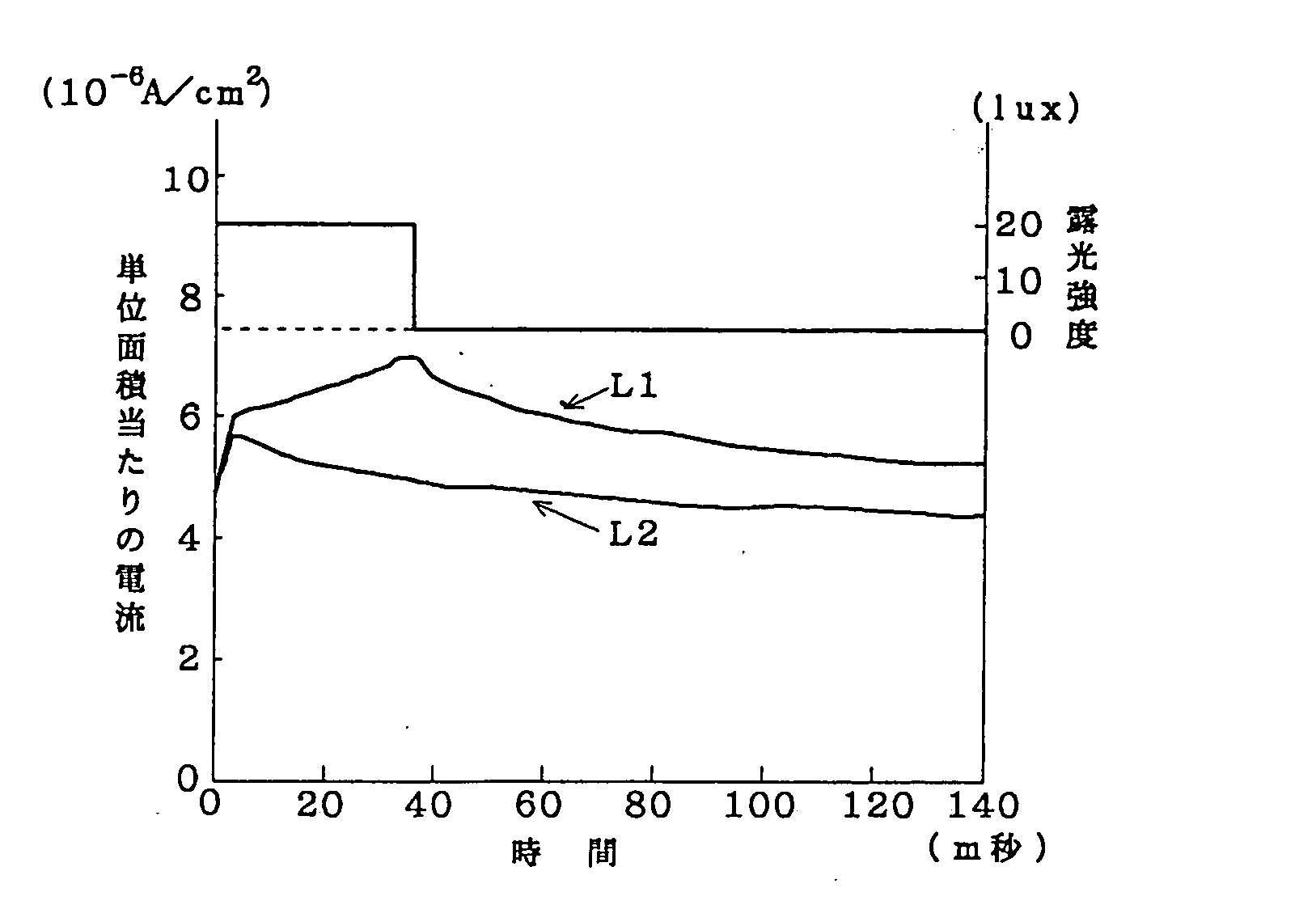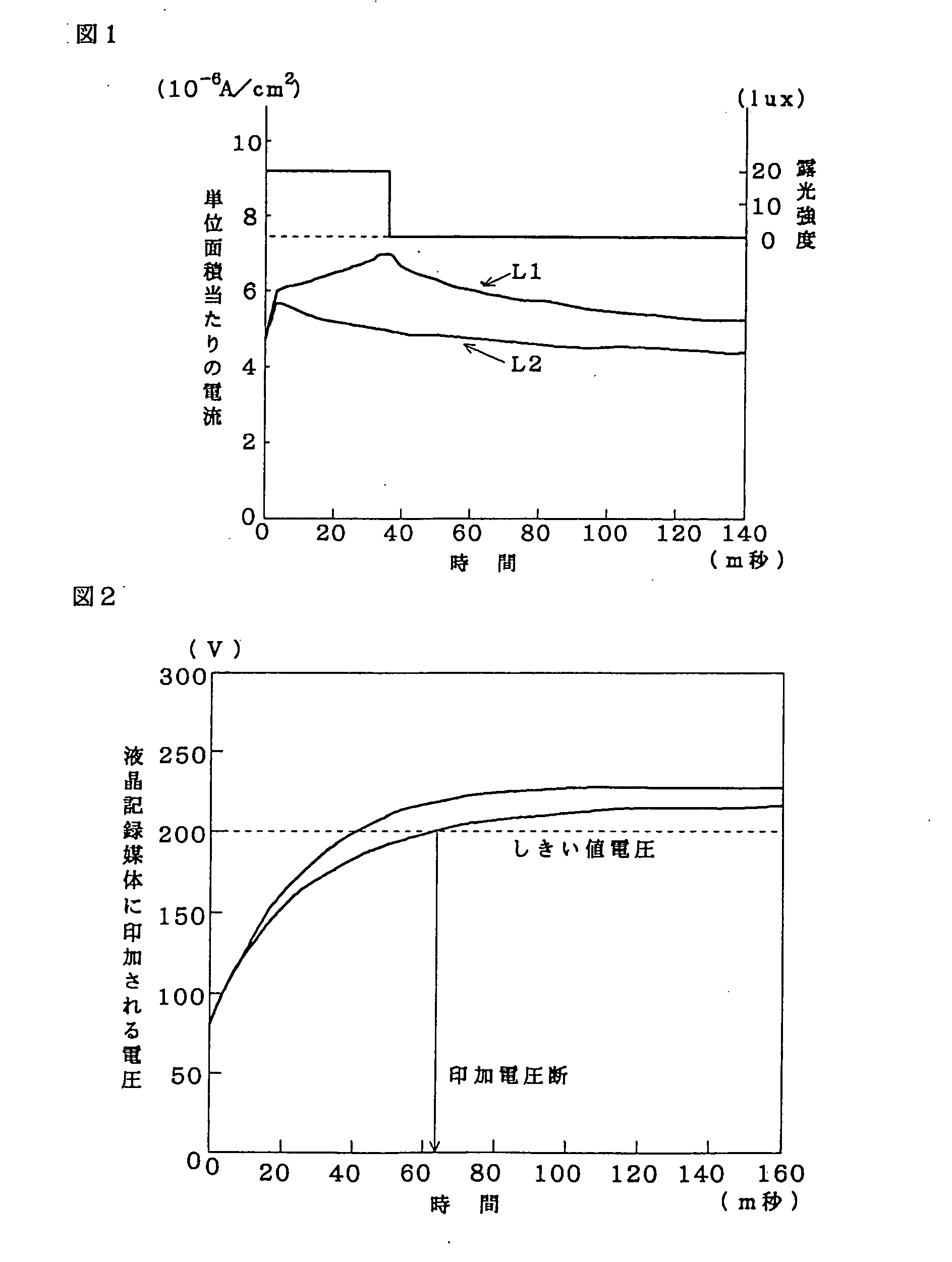Photoelectric sensor, information recording method, and information recording system
a technology of information recording and photoelectric sensor, which is applied in the field of information recording system, can solve the problems of no image can be recorded again, no effective recording of information, and inability to record an image of good quality on liquid crystal recording medium
- Summary
- Abstract
- Description
- Claims
- Application Information
AI Technical Summary
Benefits of technology
Problems solved by technology
Method used
Image
Examples
example 1
[0160]An ITO film of 100 nm in thickness was sputtered on a well washed glass substrate of 1.1 mm in thickness to obtain an electrode layer.
[0161]Then, 3 parts by weight of a bisazo pigment of the structure given below, 0.75 parts by weight of a vinyl chloride-vinyl acetate copolymer, 0.25 parts by weight of polyvinyl acetate, 98 parts by weight of 1,4-dioxane and 98 parts by weight of cyclohexanone were mixed together and dispersed in each other in a paint shaker for 6 hours to prepare a coating solution. The coating solution was spin-coated on the above electrode layer at 1,400 rpm for 0.4 seconds, and then dried at 100° C. for 1 hour to obtain a carrier generation layer of 300 nm in thickness.
[0162]A coating solution obtained by mixing together 1 part by weight of a carrier transport substance or a compound of the following structure, 4 parts by weight of polystyrene resin, 22 parts by weight of 1,1,2-trichloromethane and 14 parts by weight of dichloromethane was spin-coated on t...
example 2
[0168]The characteristics of the photoelectric sensor were measured following Example 1 with the exception that voltage was applied thereto as follows.
[0169]The photoelectric sensor was exposed to 20-lux light for 33 milliseconds at a constant applied voltage of 200 volts, and at a rectangular wave form of applied voltage of 200 volts. The resulting current data are shown in FIG. 16. The application of the rectangular wave to the sensor was carried out every 50 msec.
[0170]The currents obtained at the constant applied voltage are shown by broken lines, and the currents obtained at the rectangular wave form of applied voltage by solid lines.
[0171]At no applied voltage no current flows. Either at the constant applied voltage of 200 volts or at the rectangular wave or pulse form of applied voltage of 200 volts, however, the currents have an almost equal value. Even in the cycle in which the finish of the application of voltage is followed by resuming the application of voltage, the obta...
example 3
[0174]The photoelectric sensor was exposed to 12-lux light for an exposure time of 500 msec. In FIG. 17, the current obtained when a constant voltage of 200 volts was continuously applied thereto as in Example 2 is shown by a broken line, and the current obtained when the application of a rectangular wave form of voltage thereto was continued for 50 msec., and then interrupted for 50 milliseconds by a solid line. As in Examples 1 and 2, the photo-induced current continues to increase during exposure in the state where a constant voltage is applied to the sensor. When the rectangular wave voltage in a pulse form is applied to the sensor, however, the photo-induced current is found to increase during exposure even at an applied voltage of 0 volt.
PUM
| Property | Measurement | Unit |
|---|---|---|
| Time | aaaaa | aaaaa |
| Current density | aaaaa | aaaaa |
| Electric field | aaaaa | aaaaa |
Abstract
Description
Claims
Application Information
 Login to View More
Login to View More - R&D
- Intellectual Property
- Life Sciences
- Materials
- Tech Scout
- Unparalleled Data Quality
- Higher Quality Content
- 60% Fewer Hallucinations
Browse by: Latest US Patents, China's latest patents, Technical Efficacy Thesaurus, Application Domain, Technology Topic, Popular Technical Reports.
© 2025 PatSnap. All rights reserved.Legal|Privacy policy|Modern Slavery Act Transparency Statement|Sitemap|About US| Contact US: help@patsnap.com



